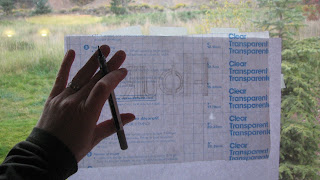Life is Beautiful!
My friend is full of life and due with her second child any day now. The official due date is October 7th. I am especially excited, for I get to be at the birth. I've been at one other birth besides those of my two sons, and I'm hoping to get my doula training this year. The photo above is one I took of my friend a couple weeks ago. I'm hoping my new camera arrives before her Little One.
In preparation for birth, we honored our friend with a Blessing Way a couple weeks ago.
Blessing Ways are such beautiful ceremonies that I just wanted to share a couple of thoughts about them.
We don't have nearly enough meaningful rituals, rites of passages and positive ceremonies in our culture these days.
I crave them! Do you?
A Blessing Way honors the mother before she gives birth. It is not a Baby Shower, which focuses on the baby and presents. A Blessing Way is a time to circle around the mother-to-be, give her strength, love, hope, encouragement. It is a time for us to be meaningful, purposeful and create a circle of light for a mother as she prepares herself for the initiation of birthing and the journey of motherhood.
There are many symbolic rituals you can create for a Blessing Way.
Here are a few that I've been a part of:
Adorn the mother with flowers or a flower crown.
Soak and rub the mother's feet, rub her back, arms, hands.
Paint the mother's toes (she has a hard time reaching them herself)
Decorate the mother's belly with henna. Each woman at the Blessing Way can add to the design.
Bring symbolic items for an alter for the mother. Choose something meaningful to bring her strength, help her let go, give her grace, humor, lightness, rhythm...whatever you feel is best. Perhaps this is an element you feel she needs or a strength you have gift you have and want to share with her. Perhaps it is a strength of hers that you want to recognize, reminding her of who she is.
Bring a symbolic bead. Everyone can speak of what their bead represents. Then the beads are strung together in a necklace for the mother to wear during labor or hang near her.
Bring a symbolic item that is hung from a branch. This can later be transformed into a mobile for the baby. It may be filled with beads, feathers, shells, words, anything that can be incorporated into the branch or hung from it.
Write down qualities you want the mother to remember or sayings or poems to help her along the way. Keep these as cards the mother can flip through when needing some support, or bind them in a simple book.
Add any elements of ritual and celebration that you would like to include: Candles, food, song, photographs, dance, stories...
Have everyone sit in a circle. Take a skein of yarn and wrap a section around the mother's wrist. Then pass the yarn to each person, letting them wrap the yarn around their wrists. In the end, each woman is connected to the mother. When the yarn is then cut, each woman ties her portion on her own wrist. They wear the yarn bracelet until the new baby is born. For me this ritual is very powerful. I love the feeling of all being connected. Even when the circle is physically broken, we each hold a portion of that circle. Often times it can be challenging to remember to think about something that I want to hold in my mind and heart. I often want to participate in a daily meditation, something I'm working on, or want to hold someone in my thoughts who needs extra thought, care, prayers. This can be hard to do as we go about our daily lives. Sometimes it takes a reminder for me to revisit my intention. Having a visual on my wrist means that every time I reach out with my hand, I am reminded of the mother's journey. I have her in my thoughts dozens of times each day. She knows that each woman at the Blessing Way is also thinking of her each day, remembering the emotional and spiritual gift that they wished upon her.
For my friend, I took the rest of the skein of yarn and knit her Little One a hat. It is kind of an elfin beehive hat. I think it may be a bit too big for her/his first day of life, but it will fit sometime during our winter.
Ok Little One, your Mama is fully Blessed. We are all excited to meet you and welcome you to this world. The space has been created. When you are ready, we are ready to receive you.




















































